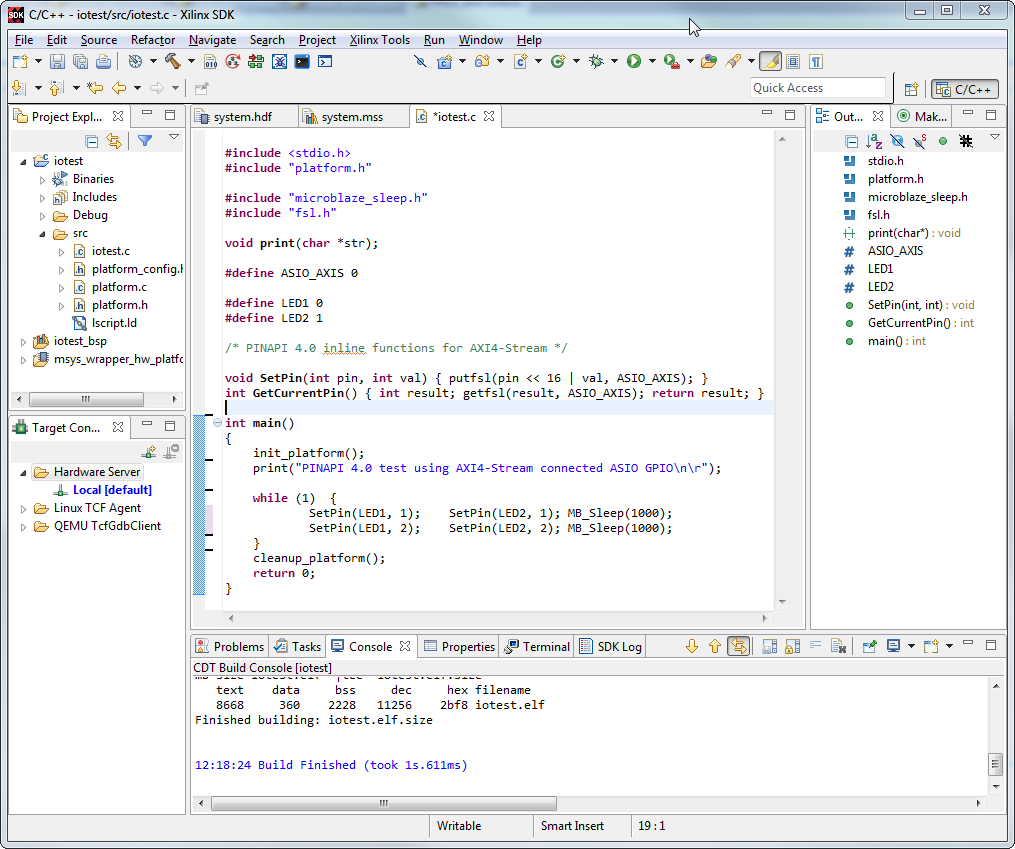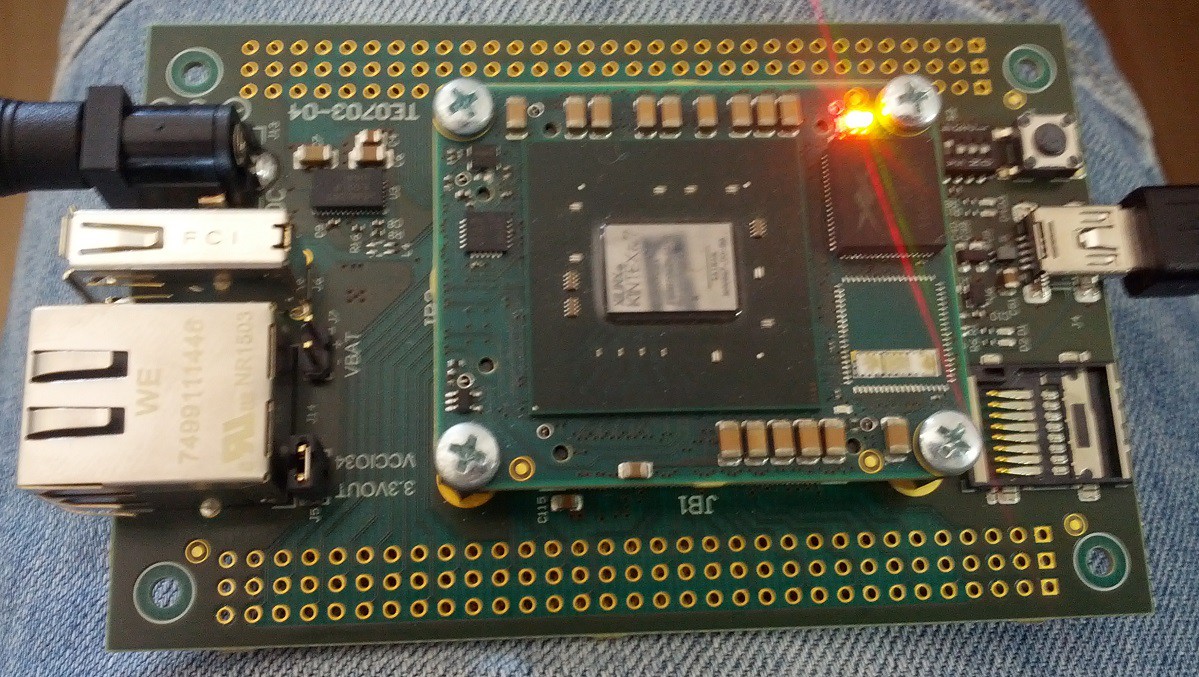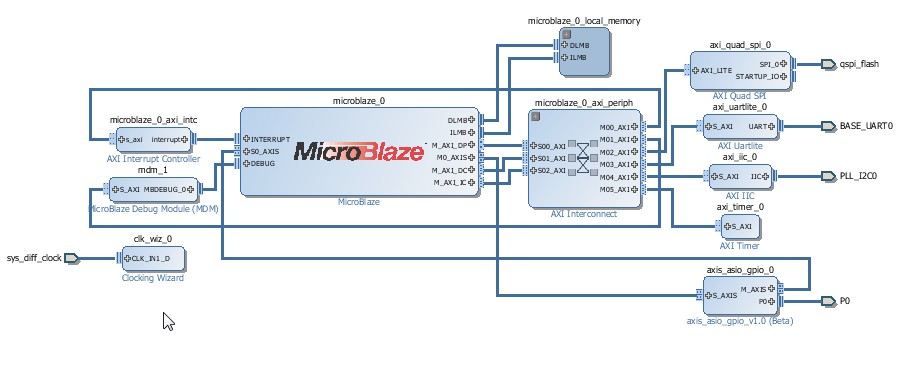-
MicroPython with PINAPI
10/09/2015 at 19:01 • 0 commentsFirst of all it was cool to get MicroPython to work on Xilinx FPGA, Kintex, but even nicer was to actually see the Python code to actually DO something.. well the MicroPython LED modules did use the thin PINAPI layer to set the LED values on and off.
-
Again a first use
09/11/2015 at 07:35 • 0 commentsA small c code snipptet is all that takes to convert an FPGA to in-system self test tool that reads "netlist" of exernal connections and does connectivity testing. Software is replacing old hard-coded designs that did only report success fail on simple pin to pin connectivity tests.
-
First use case: I/O Test for Xilinx KINTEX FPGA
09/02/2015 at 10:23 • 0 commentsThis is how PINAPI can be used together with microfpga concept and simple ASIO (A Simple I/O).
![]()
This is the software view, for simplicity PINAPI functions are declared as in the main.c. What this code does? Well it does blink a LED, or to be precise two LED's on this board:
![]()
This code worked first time compiled and downloaded to the FPGA.
Wait a moment but there is no Processor? To where did the code go then?
![]()
Here is our Processor, it is FREE for everyone no license fees. Mouse configurable. Everything here is done by a few mouse-clicks. All input output pins are magically connected to correct physical pins of the hardware.
P0 is generic ASIO GPIO connected to all I/O pins making them all equal. In this case this single GPIO port has 152 pins. This FPGA design was "clicked together" and it worked first time tried, no debugging or troubleshooting involved.
Why? This use case is "in system testing" - a programmable device is converted from "nothing" to Microcontroller (yes look at MicroFPGA.COM ... soon).
This Microcontroller can access pin_map file generated from PCB design and used by the Vivado Board Awareness (this is the magic that connects the I/O s to where the belong).
This Microcontroller can test the inputs outputs using local loopback, check for open and shorts, and report go no-go on LEDs and detailed test report on UART.
All it takes are some mouseclicks, and few lines of code for the PINAPI
 Antti Lukats
Antti Lukats

